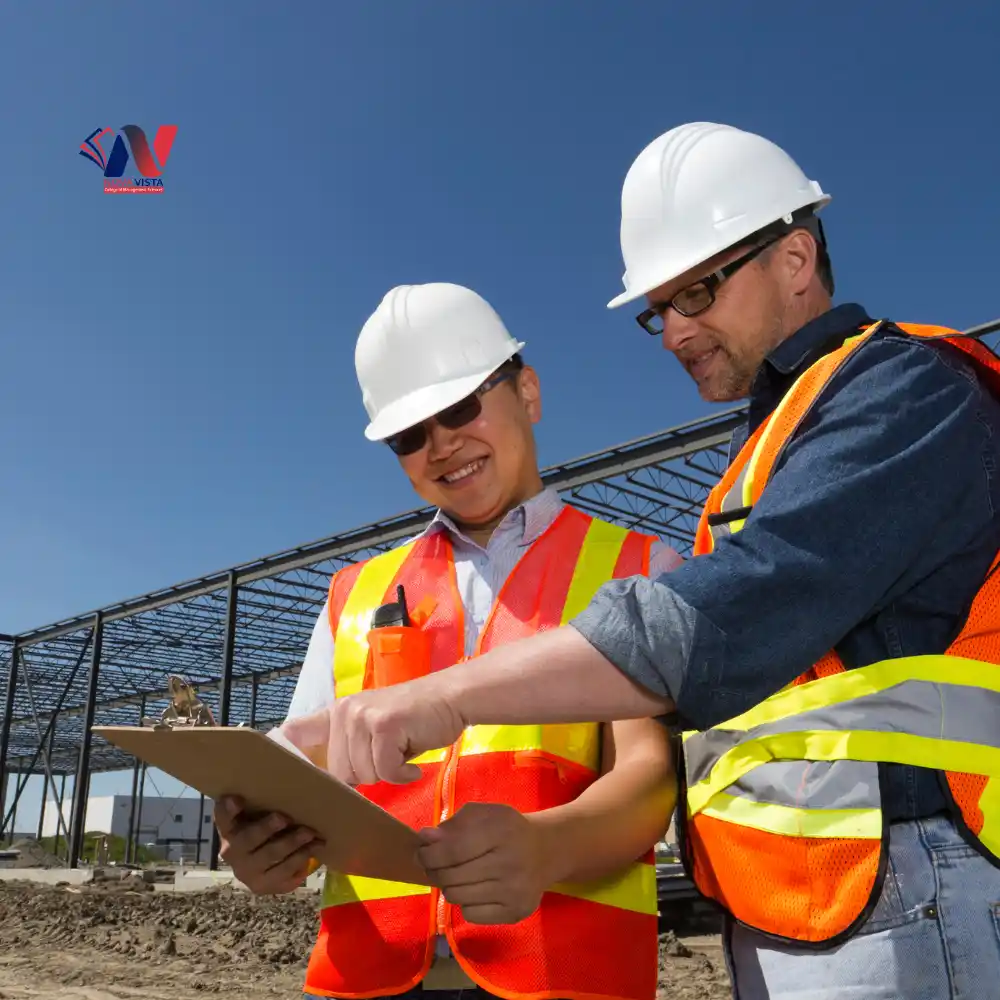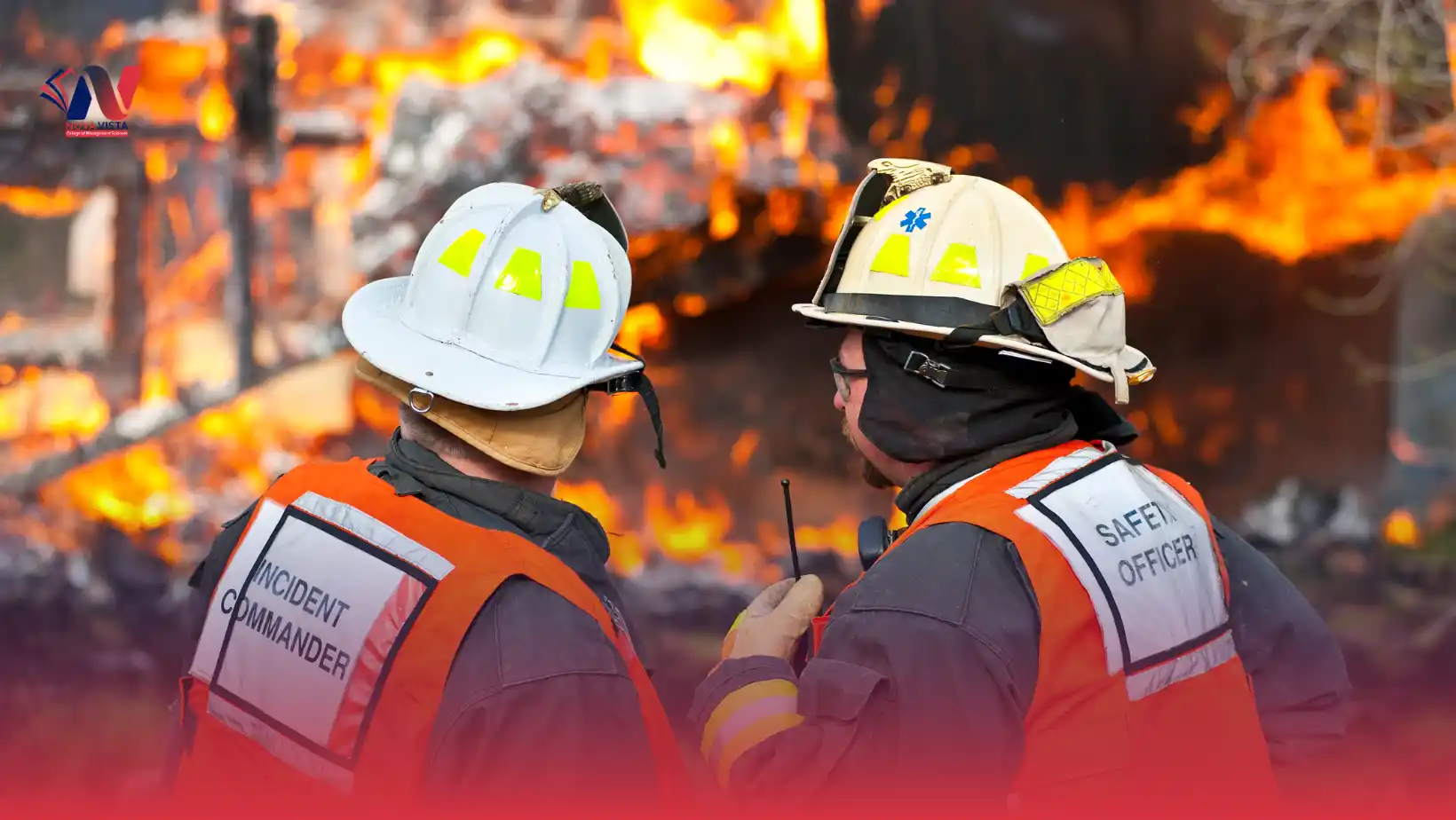The ICTQual AB Level 6 International Diploma in Fire Safety and Firefighting Technology is a globally recognized qualification designed for professionals who want to build expertise in fire prevention, firefighting operations, and safety management. This advanced diploma combines practical knowledge with technical skills to prepare learners for leadership roles in the fire and safety industry.
With the growing demand for qualified experts in fire safety and firefighting technology, this program offers a career-focused pathway that meets international standards. Learners gain in-depth knowledge of fire behavior, emergency response planning, risk assessment, and modern firefighting techniques. Whether you are aiming to advance in fire safety engineering, firefighting operations, or occupational safety, this diploma equips you with the tools to succeed.
The Level 6 Fire Safety and Firefighting Diploma International Certification is especially suitable for those who want to pursue opportunities worldwide, as it reflects the latest global practices. Through interactive learning, real-world case studies, and advanced training, learners develop both technical and decision-making skills essential for high-risk environments.
By completing the International Diploma in Fire Safety and Firefighting Technology, you gain not only a professional qualification but also international recognition that strengthens your career prospects in industries such as oil and gas, aviation, construction, and emergency services. This program is ideal for both experienced professionals seeking career advancement and new learners who aspire to build a strong foundation in fire safety and firefighting engineering.
Start your journey today with this accredited Fire Safety and Firefighting Diploma Level 6 and open doors to global career opportunities in one of the most vital and respected professions.
Awarding Body
ICTQual AB
Study Mode
Online
Qualification Level
Level 6
Completion Time
3-Years
Study Units
36 Mandatory Units
Assessments
Assignments & Evidences Based
| Qualification Title | ICTQual AB Level 6 International Diploma in Fire Safety and Firefighting Technology |
| Level | Level 6 |
| Total Credits | 360 |
| Assessment | Pass or fail Internally assessed and verified by centre staff External quality assurance by ICTQual AB verifiers |
To enrol in the ICTQual AB Level 6 International Diploma in Fire Safety and Firefighting Technology ,applicants must meet the following entry criteria:
Minimum Age
- Applicants must be 18 years of age or older at the time of registration.
Educational Background
- A minimum of a Level 5 qualification, diploma, or equivalent in a relevant field such as fire safety, firefighting, occupational safety, or engineering is preferred.
- Candidates with a strong academic foundation in science or technical studies are encouraged to apply.
Work Experience
- For professionals, at least 2–3 years of relevant work experience in fire safety, firefighting operations, or health and safety management is highly recommended.
- However, motivated learners without prior experience may also apply, provided they are committed to completing all required assessments.
English Language Proficiency
- Since the course is delivered in English, learners must demonstrate good English communication skills (reading, writing, and speaking).
- Non-native English speakers may be asked to provide evidence of proficiency (e.g., IELTS, TOEFL, or equivalent).
This qualification, the ICTQual AB Level 6 International Diploma in Fire Safety and Firefighting Technology, consists of 36 mandatory units.
Mandatory Units of ICTQual AB Level 6 International Diploma in Fire Safety and Firefighting Technology
This qualification, the ICTQual AB Level 6 International Diploma in Fire Safety and Firefighting Technology, consists of 36 mandatory units.
Year 1 – Foundation in Fire Safety and Firefighting Technology
- Principles of Fire Science and Combustion
- Introduction to Fire Safety Management
- Fire Dynamics and Behaviour
- Fire Prevention and Hazard Identification
- Basics of Firefighting Equipment
- Health, Safety, and Environmental Awareness
- Fire Risk Assessment Fundamentals
- Emergency Response Planning
- Laboratory Techniques in Fire Safety
- Technical Report Writing
- Introduction to Fire Safety Regulations and Standards
- Fire Simulation and Safety Software Basics
Year 2 – Intermediate Fire Safety and Firefighting Technology
- Advanced Fire Risk Assessment Techniques
- Fire Detection and Alarm Systems
- Fire Suppression Systems and Methods
- Industrial Fire Safety Management
- Fire Safety in High-Risk Environments
- Emergency Evacuation Planning and Procedures
- Process Control and Safety Automation
- Data Analysis and Fire Incident Investigation
- Project Planning and Technical Communication
- Quality Control and Assurance in Fire Safety
- Advanced Laboratory Experiments in Fire Safety
- Fire Safety Compliance and Regulatory Standards
Year 3 – Advanced Fire Safety and Firefighting Technology
- Advanced Firefighting Techniques and Strategies
- Fire Safety Project Management
- Fire Behaviour Modelling and Simulation
- Hazardous Materials and Industrial Fire Protection
- Emergency Response Leadership and Coordination
- Risk Assessment and Safety Decision-Making
- Fire Safety in Large-Scale Facilities and Complex Sites
- Advanced Laboratory Techniques and Field Testing
- Supply Chain and Logistics in Fire Safety Operations
- Capstone Project in Fire Safety & Firefighting Technology
- Professional Development and Leadership in Safety Management
- Strategic Decision-Making in Fire Safety and Emergency Operations
Upon successful completion of the ICTQual AB Level 6 International Diploma in Fire Safety and Firefighting Technology, learners will be able to:
Year 1 – Foundation in Fire Safety and Firefighting Technology
Principles of Fire Science and Combustion
- Understand the fundamental principles of fire chemistry and combustion processes.
- Analyze how heat, fuel, and oxygen interact to initiate and sustain fire.
- Identify stages of combustion and their impact on firefighting techniques.
- Apply scientific principles to fire prevention and extinguishing methods.
- Evaluate real-world fire scenarios using basic fire science concepts.
Introduction to Fire Safety Management
- Demonstrate knowledge of core fire safety management principles.
- Recognize the importance of workplace fire policies and procedures.
- Apply risk-based thinking to fire safety planning.
- Understand the role of fire safety managers in organizational safety.
- Develop awareness of global fire safety frameworks and practices.
Fire Dynamics and Behaviour
- Explain the physical and chemical behavior of fire in different environments.
- Assess factors influencing flame spread, smoke movement, and flashover.
- Apply knowledge of fire dynamics to improve emergency response.
- Differentiate between fire growth stages and their hazards.
- Use fire behavior insights for prevention and control strategies.
Fire Prevention and Hazard Identification
- Identify fire hazards in residential, industrial, and commercial settings.
- Conduct basic fire hazard inspections and reporting.
- Recommend fire prevention strategies aligned with safety regulations.
- Evaluate the impact of human factors on fire risks.
- Apply hazard identification methods to reduce fire incidents.
Basics of Firefighting Equipment
- Recognize different types of firefighting equipment and their uses.
- Demonstrate proper handling of extinguishers, hoses, and PPE.
- Understand maintenance requirements of basic firefighting tools.
- Select appropriate equipment for different classes of fire.
- Apply safe operational techniques during firefighting activities.
Health, Safety, and Environmental Awareness
- Understand the relationship between fire safety and environmental protection.
- Apply occupational health and safety principles in fire-related work.
- Recognize the importance of PPE in firefighting operations.
- Assess environmental impacts of fire and suppression activities.
- Promote a culture of health, safety, and sustainability.
Fire Risk Assessment Fundamentals
- Define the purpose and process of fire risk assessment.
- Identify key fire hazards and vulnerable areas.
- Assess probability and consequences of fire incidents.
- Develop basic fire risk assessment reports.
- Recommend mitigation strategies to reduce risks.
Emergency Response Planning
- Understand the principles of effective emergency planning.
- Develop basic emergency evacuation plans for facilities.
- Apply communication strategies in emergency scenarios.
- Recognize the importance of drills and preparedness exercises.
- Evaluate emergency response effectiveness through case studies.
Laboratory Techniques in Fire Safety
- Demonstrate safe laboratory practices in fire safety experiments.
- Apply fire testing methods to analyze material properties.
- Record, analyze, and interpret experimental fire data.
- Use laboratory results to support fire safety conclusions.
- Develop problem-solving skills through applied fire science.
Technical Report Writing
- Develop professional fire safety and firefighting reports.
- Present data in structured, clear, and concise formats.
- Apply technical writing skills for incident reporting.
- Use industry-accepted referencing and documentation styles.
- Communicate complex fire safety concepts effectively.
Introduction to Fire Safety Regulations and Standards
- Understand international fire safety codes and compliance standards.
- Identify differences between local and global fire safety laws.
- Apply basic regulatory requirements in workplace settings.
- Recognize the importance of legal compliance in safety management.
- Evaluate case studies of compliance and non-compliance.
Fire Simulation and Safety Software Basics
- Use basic fire simulation software for scenario modeling.
- Understand the role of software in predicting fire behavior.
- Apply computer-based tools for safety planning.
- Interpret simulation results for practical applications.
- Develop confidence in digital tools for fire safety training.
Year 2 – Intermediate Fire Safety and Firefighting Technology
Advanced Fire Risk Assessment Techniques
- Apply advanced methods to assess complex fire risks.
- Integrate quantitative and qualitative risk assessment tools.
- Evaluate high-risk industrial processes for fire hazards.
- Develop detailed fire risk assessment reports.
- Recommend data-driven risk mitigation strategies.
Fire Detection and Alarm Systems
- Understand principles of fire detection technology.
- Identify types of detectors, alarms, and monitoring systems.
- Apply knowledge of system design for different environments.
- Evaluate the reliability and performance of alarm systems.
- Recognize compliance requirements for detection systems.
Fire Suppression Systems and Methods
- Compare different fire suppression technologies and systems.
- Evaluate the suitability of suppression methods for various risks.
- Demonstrate knowledge of sprinkler, foam, and gas systems.
- Apply maintenance and testing procedures for suppression systems.
- Recommend suppression solutions for industrial and commercial sites.
Industrial Fire Safety Management
- Recognize fire safety challenges in industrial settings.
- Apply industry-specific fire management strategies.
- Assess risks in oil, gas, chemical, and manufacturing sectors.
- Implement fire drills and emergency planning in industries.
- Evaluate case studies of industrial fire incidents.
Fire Safety in High-Risk Environments
- Identify fire hazards in high-risk facilities such as airports or power plants.
- Apply fire safety design principles to complex environments.
- Develop strategies for firefighting in hazardous locations.
- Recognize limitations of traditional firefighting in high-risk zones.
- Use global best practices for advanced fire protection.
Emergency Evacuation Planning and Procedures
- Design effective evacuation strategies for large facilities.
- Apply international standards for emergency exits and signage.
- Assess effectiveness of drills and evacuation exercises.
- Recognize challenges in high-occupancy evacuations.
- Recommend improvements for evacuation planning.
Process Control and Safety Automation
- Understand automation’s role in fire safety systems.
- Apply knowledge of control systems in safety operations.
- Recognize integration of IoT and digital technologies in safety.
- Assess automated system reliability in fire prevention.
- Recommend automation solutions for modern fire protection.
Data Analysis and Fire Incident Investigation
- Collect, analyze, and interpret fire incident data.
- Apply root cause analysis to fire investigations.
- Use data-driven insights for prevention strategies.
- Develop technical investigation reports.
- Evaluate international fire incident case studies.
Project Planning and Technical Communication
- Apply project management tools in fire safety projects.
- Demonstrate effective communication of technical data.
- Develop structured project documentation.
- Recognize the importance of teamwork in project execution.
- Deliver presentations for professional fire safety contexts.
Quality Control and Assurance in Fire Safety
- Understand quality assurance processes in safety management.
- Apply inspection and auditing methods in fire safety systems.
- Recognize the importance of international ISO standards.
- Develop checklists and reporting tools for quality control.
- Recommend continuous improvement strategies.
Advanced Laboratory Experiments in Fire Safety
- Perform advanced fire safety laboratory experiments.
- Analyze materials and their fire resistance properties.
- Apply experimental results to real-world fire scenarios.
- Record and interpret complex data sets.
- Develop research-based approaches to fire safety.
Fire Safety Compliance and Regulatory Standards
- Apply international fire safety compliance frameworks.
- Recognize the importance of NFPA, OSHA, and ISO standards.
- Develop compliance strategies for organizations.
- Evaluate penalties and consequences of non-compliance.
- Use case studies to strengthen compliance awareness.
Year 3 – Advanced Fire Safety and Firefighting Technology
Advanced Firefighting Techniques and Strategies
- Demonstrate knowledge of advanced firefighting operations.
- Apply tactical approaches for large-scale fire incidents.
- Recognize specialized firefighting tools and equipment.
- Evaluate strategies for multi-agency firefighting coordination.
- Adapt firefighting techniques to complex environments.
Fire Safety Project Management
- Apply project management frameworks to fire safety initiatives.
- Develop project budgets, timelines, and resource plans.
- Monitor project progress using international standards.
- Communicate effectively with stakeholders.
- Evaluate project outcomes for continuous improvement.
Fire Behaviour Modelling and Simulation
- Use advanced simulation software to predict fire spread.
- Apply modeling tools for risk assessment and prevention.
- Interpret simulation data for decision-making.
- Develop strategies based on predictive modeling.
- Integrate simulation outcomes into safety planning.
Hazardous Materials and Industrial Fire Protection
- Recognize risks associated with hazardous materials.
- Apply international protocols for HAZMAT incidents.
- Develop firefighting strategies for chemical and industrial fires.
- Assess PPE requirements for hazardous material response.
- Recommend safety systems for industrial protection.
Emergency Response Leadership and Coordination
- Demonstrate leadership in emergency response scenarios.
- Coordinate multi-disciplinary teams during crises.
- Apply decision-making under pressure in emergencies.
- Develop communication strategies for emergency leadership.
- Evaluate leadership roles through case study analysis.
Risk Assessment and Safety Decision-Making
- Apply advanced risk analysis to high-stakes environments.
- Use decision-making models in safety operations.
- Recognize psychological and human factors in decision-making.
- Develop mitigation strategies for identified risks.
- Evaluate safety decisions using evidence-based methods.
Fire Safety in Large-Scale Facilities and Complex Sites
- Assess fire safety requirements of airports, hospitals, and skyscrapers.
- Develop customized fire safety plans for complex facilities.
- Apply international building codes and fire safety standards.
- Recognize challenges in evacuation of large facilities.
- Recommend innovative solutions for high-occupancy safety.
Advanced Laboratory Techniques and Field Testing
- Apply advanced experimental methods in fire safety research.
- Conduct field testing in real-life fire scenarios.
- Collect and analyze data with high accuracy.
- Evaluate performance of safety equipment in field conditions.
- Develop professional research reports for fire safety.
Supply Chain and Logistics in Fire Safety Operations
- Recognize logistics challenges in emergency operations.
- Apply supply chain management to fire safety planning.
- Develop strategies for resource allocation during emergencies.
- Evaluate international best practices in emergency logistics.
- Recommend improvements in supply chain resilience.
Capstone Project in Fire Safety & Firefighting Technology
- Design and execute an independent research project.
- Apply theoretical knowledge to real-world fire safety challenges.
- Demonstrate problem-solving and innovation skills.
- Produce a comprehensive technical project report.
- Present research findings to a professional audience.
Professional Development and Leadership in Safety Management
- Develop leadership skills for safety management roles.
- Apply ethical principles in professional practice.
- Recognize importance of lifelong learning in safety.
- Build career-focused professional development plans.
- Evaluate personal leadership growth and competencies.
Strategic Decision-Making in Fire Safety and Emergency Operations
- Apply strategic frameworks to emergency decision-making.
- Develop policies for fire safety and risk reduction.
- Recognize the role of leadership in long-term safety planning.
- Integrate data, simulations, and risk models in strategies.
- Evaluate outcomes of strategic decisions for improvement.
The ICTQual AB Level 6 International Diploma in Fire Safety and Firefighting Technology is designed for professionals and learners who aspire to excel in fire safety, firefighting operations, and emergency management. This program is suitable for firefighters, safety officers, engineers, managers, and fresh graduates seeking internationally recognized qualifications. Whether you are advancing your career or entering the field, this diploma equips you with the technical expertise, leadership skills, and global recognition needed to succeed in the fire and safety industry.
1. Fire Safety Professionals Seeking Career Advancement
- Ideal for those already working in fire safety and firefighting technology.
- Enhances technical expertise and leadership skills.
- Builds professional recognition with an international diploma in fire safety.
- Prepares learners for supervisory and management roles.
- Strengthens career pathways in government, oil & gas, aviation, and construction industries.
2. Firefighters and Emergency Responders
- Suitable for active firefighters looking to upskill in advanced firefighting techniques.
- Improves emergency response planning and tactical decision-making.
- Provides knowledge of international fire safety regulations and compliance standards.
- Enhances practical skills in fire suppression systems and hazard control.
- Opens global opportunities in firefighting and rescue services.
3. Health, Safety, and Environmental (HSE) Officers
- Designed for HSE professionals responsible for workplace safety.
- Builds strong competencies in fire risk assessment and hazard identification.
- Strengthens knowledge of safety management systems and international standards.
- Equips learners with advanced tools for emergency evacuation planning.
- Helps HSE officers transition into senior fire safety leadership roles.
4. Engineering and Technical Professionals
- Perfect for engineers working in oil, gas, chemical, or manufacturing industries.
- Provides expertise in industrial fire safety management.
- Enhances skills in fire behavior modeling and safety automation.
- Strengthens technical knowledge of detection and suppression systems.
- Equips engineers to integrate fire safety into industrial design and operations.
5. Graduates and Fresh Learners in Safety Fields
- Suitable for graduates with a background in safety, engineering, or science.
- Builds a strong foundation in fire dynamics, firefighting equipment, and safety management.
- Provides international recognition for entry into global careers.
- Offers hands-on exposure to laboratory experiments and simulation software.
- Helps fresh learners secure their first professional role in fire safety and firefighting.
6. Managers and Supervisors in High-Risk Industries
- Essential for professionals managing safety in high-risk facilities.
- Provides strategies for fire safety in large-scale and complex sites.
- Strengthens decision-making for emergency planning and coordination.
- Equips managers with advanced project management skills in fire safety.
- Supports compliance with NFPA, OSHA, ISO, and other international standards.
7. International Learners Seeking Global Recognition
- Ideal for learners aiming for international fire safety qualifications.
- Offers a globally recognized Level 6 diploma benchmarked to international standards.
- Prepares learners for roles across aviation, shipping, construction, and energy sectors.
- Strengthens career mobility with internationally accepted certification.
- Equips learners with cutting-edge knowledge for global fire safety challenges.
As an approved centre of ICTQual AB, we provide two distinct certification pathways for learners enrolling in the ICTQual AB Level 6 International Diploma in Fire Safety and Firefighting Technology. This ensures both experienced professionals and fresh learners can achieve an internationally recognized qualification.
Route 1 – Experienced Professionals
- This pathway is designed for candidates with at least 6 years of verifiable work experience in fire safety, firefighting, health and safety, or related industries.
- Learners can demonstrate their knowledge and expertise through professional evidence, portfolio submission, and assessment.
- The route provides recognition for prior learning and industry experience, allowing experienced professionals to achieve certification faster.
- It is ideal for those already working in senior roles who seek international certification in fire safety and firefighting technology.
Route 2 – Fresh Candidates
- This pathway is suitable for fresh learners or graduates who may not have prior work experience in the field.
- Candidates are required to complete all 36 assignments covering the full range of study units across foundation, intermediate, and advanced levels.
- This route ensures learners build a strong academic and practical foundation in fire science, fire safety management, and firefighting technology.
- Successful completion of the assignments leads to the award of the ICTQual AB Level 6 International Diploma in Fire Safety and Firefighting Technology, opening doors to global career opportunities.
Register Now
Related Qualifications

ProQual Level 3 NVQ Certificate in Occupational Health and Safety

ProQual Level 7 Diploma in Occupational Health and Safety Management

ProQual Level 3 Certificate in Assessing Vocational Achievement



